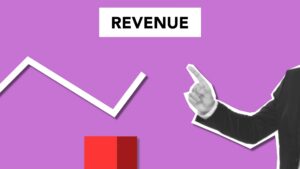The buyer journey will help you decide how your pricing page should be designed. As always, I have some tips you can put into practice today to capture value.

When to Publish Pricing
Surprisingly, some companies have a “pricing” page on their websites without displaying any prices (kind of an oxymoron). Quite often, for those companies who do list subscription costs, you’re likely to also see a “Contact Us” call to action for enterprise pricing. Depending on your customer acquisition model, publicly displaying your prices and packaging may not be necessary.
Self-Guided Purchases
Self-service SaaS refers to products/services that don’t require a sales call to complete. In this scenario, the customer has all the available information at their disposal to confidently make a purchase without ever talking to a sales representative. If the aforementioned sounds like a typical customer experience at your company, then publishing your prices is not only justified but necessary.
Guided Purchases
Full-service SaaS refers to products/services that require a sales call to complete the purchase. This is a common occurrence for solutions that require a high degree of customization and/or negotiation of terms. Only after meeting this client can you both get a solid understanding of what the cost of services are likely to be. Under circumstances where customer acquisition is heavily referral based, meeting the prospect before they make a purchase is essential for establishing a healthy client-relationship. In either case, guided purchase scenarios like these don’t require you to publicly display your pricing.
Maximize your revenue potential
Whether you decide to publish, not publish, or have a hybrid pricing page, here are some tips to follow that can help maximize your revenue potential.
Published Pricing
The listed prices should always match the currency your customer is most likely using. If you have clients in both the United States and the United Kingdom, your pricing should be available in both US dollars and British pounds. This is called price localization.
- Currency Toggle: Companies like Doodle have a toggle switch that allows the customer to choose their preferred currency. This is ideal for traveling consumers who may prefer the currency of a particular country. It also signals to the potential customer that you’re a global company.
- Geographic Detection: Allowing the website to recognize the visitor’s location is likely the better route. It removes the extra step of toggling between currencies by automatically populating the most relevant unit.
Price localization will build trust and reduce cognitive load. I encourage you to read what Profitwell wrote about this strategy. In the article, they go into great detail about both cosmetic and true price localization. Pantene saw astonishing growth when they localized their pricing in the early 2000s. I’ll write a blog about that soon but know that they tripled their sales after implementing this strategy.
Unpublished Pricing
Do your buyers talk to you first? If customers come through referrals or require negotiations, don’t rush to publish your pricing. This doesn’t necessarily mean you shouldn’t have a pricing page, but rather you should build a page that describes your features and packages while excluding the prices. Use this as an opportunity to leverage their curiosity.
Discussing your fees on a sales call is especially useful when you’re trying out new pricing. Run your trials, play around with packaging, and when you feel comfortable with a set of numbers, that’s when you should think about publishing.
Hybrid Pricing
As I mentioned earlier, you may see pricing pages with one or more priced packages but the enterprise tier says “Contact Us.” Remember, if you’re negotiating with customers, there’s no need to publish your prices even if it’s just for a single package. Moreover, you also don’t have to stick with one model for all products/services as seen in the example below. Whether or not you publish fees depends heavily upon how customers are acquired and how comfortable you are with the prices.

Source: Adobe 2022-01-10
Speaking about enterprise customers, what happens after the negotiation phase? Now that everyone has agreed on the terms of service, when should they start paying? Follow me on social media to continue this discussion.



